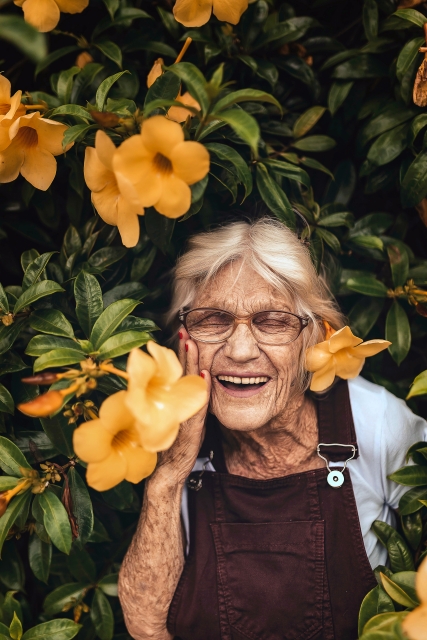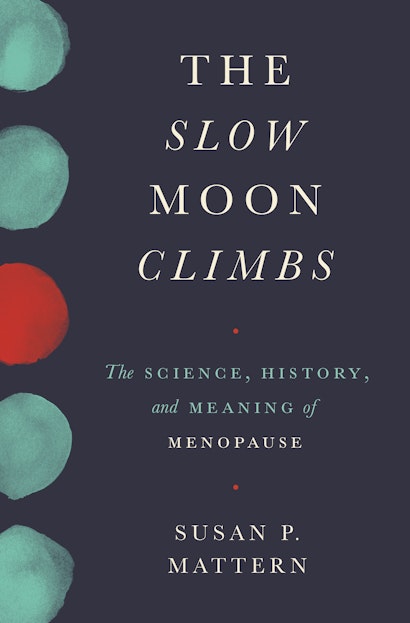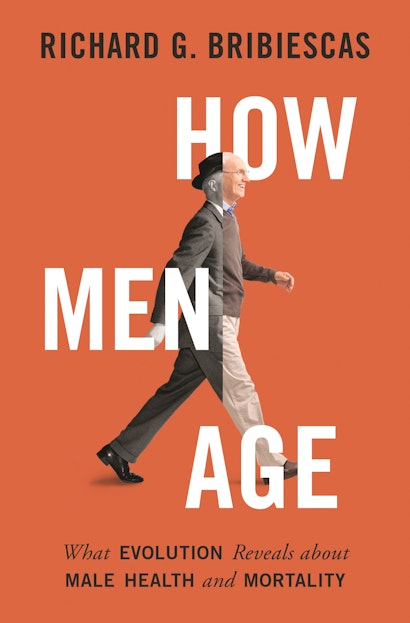Though longevity is sought after, the reality of aging is often presented in a negative light in modern society. We asked Susan Mattern and Richard Bribiescas: Are we looking at male/female aging all wrong?
Susan Mattern, author of The Slow Moon Climbs
We are thinking about aging all wrong because we believe it’s a bad thing. Humans have natural lifespans about 25-30 years longer than the lifespans of our closest relatives, the chimpanzees. Evolution has “designed” our bodies to last about 70-75 years, with individual variation. Our long lives are among the features that explain our unique success as a species and especially our ability to colonize all parts of the world.
Our strategies for subsistence and reproduction depend on skill, experience, cooperation, and a high ratio of providers (adults) to children (consumers). Human foragers reach peak productivity only in their 40’s and 50’s; families with many young children can struggle to support themselves. Throughout history and across cultures, humans transfer resources downward through the generations, from parents and grandparents to children and grandchildren (and even great-grandchildren). Certain features of the modern economy and modern medicine have partly changed this, but even in modernized societies, older people transfer their private resources downward through quite advanced ages.
So useful has midlife and old age been to our species, that evolution has gifted women with a post-reproductive life stage that frees them from childbearing. Most theories of the evolution of menopause propose that the contributions of older women to the well-being of their younger relatives and others in their group were so great, that there was no advantage to lengthening our reproductive lives to match our natural lives. Older women provided food, childcare, and other kinds of help that increased the probability of their genes spreading.
As we evolved long lives with relatively low adult mortality, we also evolved long childhoods—we didn’t need to hurry up to reproduce. This meant that we could invest a lot of time in teaching skills to our children. It meant that they could grow bigger brains, as these organs are expensive to maintain and require the extra resources and support of older adults, including post-reproductive women. It meant that a high ratio of adults to children was optimal for us, and this in turn meant that we had more people able to develop and transmit technology and culture.
Even when our productivity starts to decline in the later stages of old age, the experience of older people is invaluable in a species like ours, and even in other species. The very oldest elephant matriarchs are the most effective leaders. Some can remember water sources from droughts that occurred decades previously. The experience that improves efficiency in everyday activities can be taught even as physical prowess declines; and only our oldest cohorts have the ability to remember to remember rare events or obsolete conditions that may recur. Even today, it’s not too hard to imagine a world in which Wikipedia or Youtube no longer exist, and skills known only to the oldest among us become critical.
Misconceptions about human longevity contribute to some pernicious trends in the modern world. We should expect most bodies to be reasonably functional for about 70 years barring accidents or violence, and for as long as we maintain control over infectious diseases. If we are seeing large numbers of younger people in ill health, we need to change our society to make it easier to live healthy lives. We should celebrate, not fear, the aging of our population. Our most unique qualities as a species—our humanity—begin with our longevity.
Richard Bribiescas, author of How Men Age
Aging is more than just getting older and men do so differently in many ways compared to women. If the goal is to understand the ‘how’ and ‘why’ of male aging, the answer is ‘yes’, we should be adjusting our scientific gaze. It also depends on who is doing the looking. The medical community has made tremendous strides in understanding the physiology behind how men experience aging, such as decreases in muscle mass, hair loss, and sometimes challenges to their sexual health. There is a plethora of research on the “how” of male aging. Hormones decline, energy wanes, and tissues tend to take longer to repair themselves, if at all. The culmination of the aging process in men, death, also tends to arrive earlier than it does for women. While the ‘how’ or physiology of male aging is fairly well understood, the ‘why’, which includes the evolutionary biology of male aging, remains largely unexplored. This includes a deep understanding of human variation across the planet in association with differences in lifestyles and environments as well as comparisons with other species.
The role of testosterone in male aging is a salient example of how evolutionary biology can inform these health conversations. Testosterone is an ancient molecule with a deep evolutionary history. The testosterone that circulates in men is molecularly identical to the hormone circulating in other great apes, primates, mammals, and indeed most vertebrates. Women also produce their own share of testosterone but in lower amounts. What does this tell us? It suggests that testosterone production, circulation, action, and clearance is likely to share important similarities across species, including humans. In virtually all species, testosterone in males is involved with the regulation of metabolism, reproductive function, and behavior. But how does testosterone change in other human populations beside those living sedentary western lifestyles? Why should we care?
The current explosion in the prescriptions of testosterone supplementation over the past couple of decades is based on the assumption that we understand “normal” testosterone levels. However within the United States there is an extremely broad range of variation in testosterone levels in healthy men. Moreover, changes in testosterone levels with age can also vary widely between men. This is especially true in populations outside of the United States who often exhibit little or no change with age. This variation reflects the sensitivity of testosterone physiology to lifestyle cues. Hormones, including testosterone, evolved to respond to environmental contexts in order to optimize the allocation of energetic resources between the common needs of all organisms, growth, maintenance and reproduction. A greater awareness of this variation would be useful in determining appropriate dosages for testosterone supplementation.
Evolutionary theory can inform how we age as a species but it is very limited in its ability to shed light on aging in any individual particular male. In essence, there is no wrong way to view male aging, but we risk creating blind spots if we do not acknowledge and understand that human male aging is the result of millions of years of gene/environment interactions. To get the full evolutionary picture, scientists may adjust their gaze appropriately.
About the authors
Susan P. Mattern is Distinguished Research Professor of History at the University of Georgia. Her many books include The Prince of Medicine: Galen in the Roman Empire and Rome and the Enemy. She lives on a farm in Winterville, Georgia.
Richard G. Bribiescas is author of How Men Age: What Evolution Reveals about Male Health and Mortality (2016, Princeton University Press). He is professor of anthropology and ecology & evolutionary biology at Yale University. He also serves as vice provost for faculty development and diversity.


